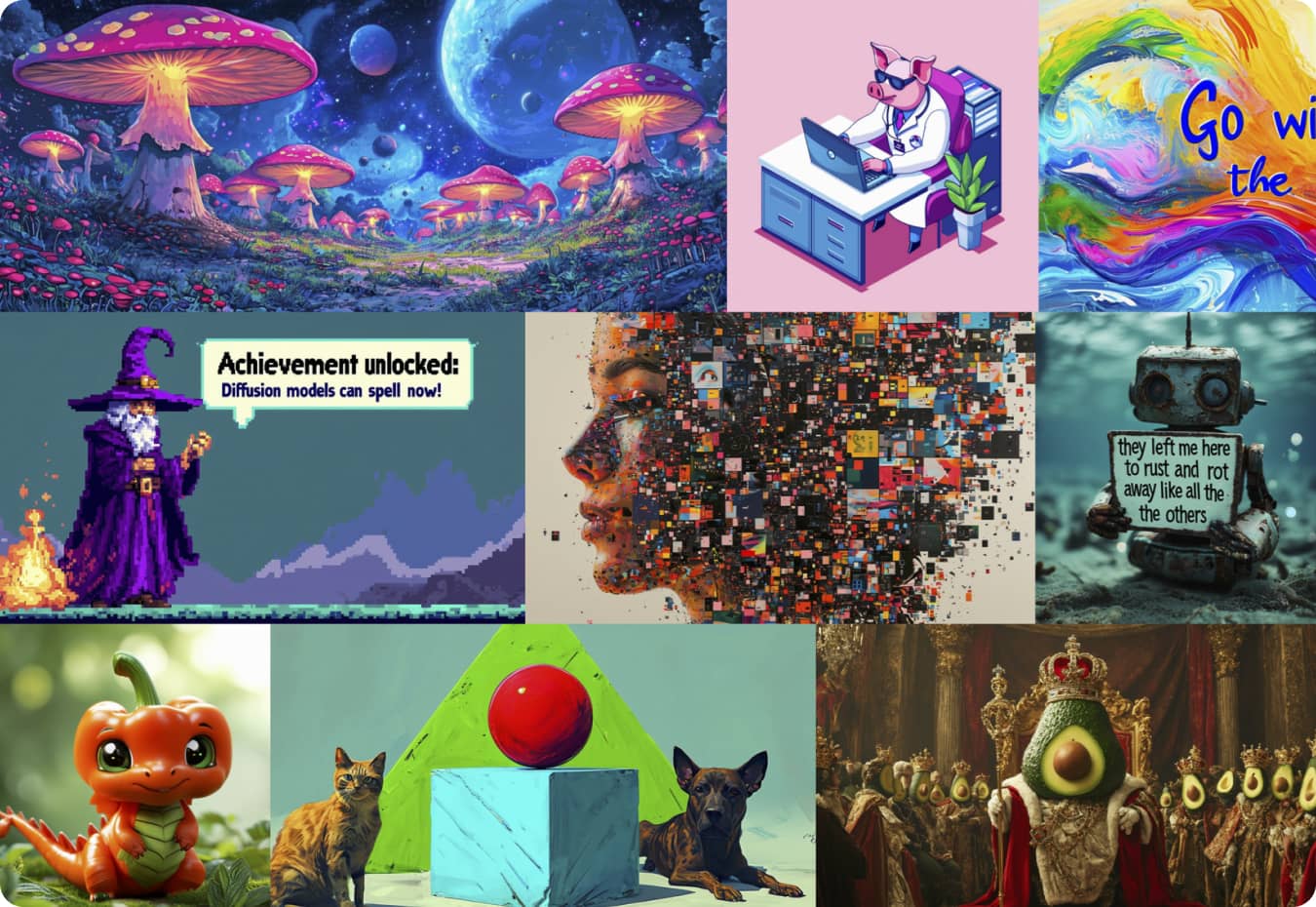Mar 10, 2024
Free
|
Paper
Paper Details
Author(s):
Patrick Esser, Sumith Kulal, Andreas Blattmann, Rahim Entezari, Jonas Müller, Harry Saini, Yam Levi, Dominik Lorenz, Axel Sauer, Frederic Boesel, Dustin Podell, Tim Dockhorn, Zion English, Kyle Lacey, Alex Goodwin, Yannik Marek, Robin Rombach
Publishing Date:
Table of Contents
1. What is it?
The paper discusses "Scaling Rectified Flow Transformers for High-Resolution Image Synthesis," which proposes an improved version of rectified flow models for text-to-image synthesis. The model uses separate weights for image and text tokens, enabling bidirectional information flow between them. The authors also introduce new noise samplers for rectified flow models that improve performance over previously known samplers.
2. How does this technology work
The technology uses a neural network to parameterize the velocity of an ordinary differential equation (ODE) that generates a probability path between data and noise distributions. The authors propose a new formulation for the forward process in rectified flow models, which connects data and noise on a straight line, and introduce modified timestep sampling techniques to improve performance. It also presents a novel transformer-based architecture for text-to-image generation that allows bi-directional information flow between image and text tokens.
3. How can it be used?
The technology can generate high-resolution images from natural language inputs, such as text descriptions or prompts. This could be useful in various applications, including content creation, advertising, gaming, virtual reality, and artificial intelligence. The model's ability to incorporate learnable streams for image and text tokens could also improve text comprehension and typography in generated images.
4. Key Takeaways
The paper introduces a new noise sampler for rectified flow models that improves performance over previously known samplers.
The authors propose a modified timestep sampling technique for rectified flow models, which puts more weight on intermediate steps to improve performance.
The paper presents a novel transformer-based architecture for text-to-image synthesis that enables bidirectional information flow be tween image and text tokens.
The authors demonstrate the superior performance of their new formulation compared to established diffusion models for high-resolution text-to-image synthesis.
The largest models in the paper outperform state-of-the-art models in the quantitative evaluation of prompt understanding and human preference ratings.
5. Glossary
Rectified Flow: A recent generative model formulation that connects data and noise on a straight line and has better theoretical properties than other diffusion model formulations.
Diffusion Model: A generative modeling technique that creates data from noise by inverting the forward paths of data towards noise, using neural networks for approximation and generalization.
Noise Sampler: A method used to generate random samples from a given distribution, which can be used for training generative models such as rectified flow models.
Transformer Architecture: A deep learning architecture that uses self-attention mechanisms to model the relationships between input and output sequences, often used in natural language processing tasks.
Bidirectional Information Flow: The ability of a model to process information from both directions (e.g., image to text or text to image), which can improve the model's understanding and representation of the data.
6. FAQs
a. What is a rectified flow model?
A rectified flow model is a generative modeling technique that uses a straight line to connect data and noise distributions, which has better theoretical properties than other diffusion model formulations. It can be used to generate high-resolution images from natural language inputs.
b. What are the advantages of using modified timestep sampling techniques in rectified flow models?
Modified timestep sampling techniques put more weight on intermediate steps, which makes it easier for the model to learn to generate meaningful samples from noise. This can improve the performance of rectified flow models compared to other diffusion model formulations.
c. What is a transformer-based architecture for text-to-image synthesis?
A transformer-based architecture for text-to-image synthesis is a deep learning model that uses self-attention mechanisms to model the relationships between image and text tokens, enabling bidirectional information flow between them. This can improve the model's understanding and representation of the data, leading to better text-to-image synthesis performance.
d. How do the authors evaluate the performance of their models?
The authors evaluate the performance of their models using validation losses, CLIP scores, and FID scores under different sampler settings (different guidance scales and sampling steps). They also use human preference ratings to assess the quality of generated images.
Disclaimer:
This text has been generated by an AI model, but originally researched, organized, and structured by a human author. The grammar and writing is enhanced by the use of AI.
